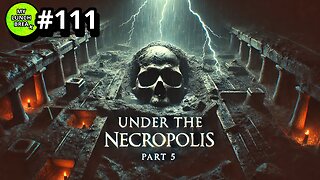Premium Only Content

TRUMP SUPPORTERS EXECUTED ACROSS GERMANY. GERMAN TRANSPORT SO EVIL
https://vk.com/reggiemiller2023
The German Democratic Republic (GDR) was established in October 1949 as a socialist state from the Soviet Zone of Occupation, and ruled by the Socialist Unity Party of Germany (SED). During its first decade of the GDR's existence, the SED under General Secretary Walter Ulbricht consolidated their rule by overtly combating political opposition, which it subdued primarily through the penal code by accusing them of incitement to war or of calls of boycott and processing them through the regular criminal judiciary.[11] In 1961, to counteract the GDR's practice of isolationism following the construction of the Berlin Wall, the judicial repression was gradually abandoned.[12] At the end of the 1960s, the GDR's desire for international recognition and rapprochement with the Federal Republic of Germany (West Germany) led to a commitment to adhere to the U.N. Charter.[citation needed]
On 3 May 1971, with the blessing of the USSR's leadership, Erich Honecker became First Secretary of the SED, replacing Ulbricht for an ostensible reason of poor health. Honecker sought to burnish the GDR's international reputation while fighting internal opposition by intensification of the Stasi's efforts to punish dissident behaviors without using the penal code.[13] The GDR signed the Basic Treaty, 1972 with West Germany to respect human rights, or at least announce its intention to do so, and the Helsinki accords in 1975.[14][15][16] Consequently, the SED regime decided to reduce the number of political prisoners, which was compensated for by practising dissident repression without imprisonment or court judgements.[17][18]
British journalist Luke Harding, who had experienced treatment on the part of Russia's FSB in Vladimir Putin's Russia that was similar to Zersetzung, writes in his book:
As applied by the Stasi, Zersetzung is a technique to subvert and undermine an opponent. The aim was to disrupt the target's private or family life so they are unable to continue their "hostile-negative" activities towards the state. Typically, the Stasi would use collaborators to garner details from a victim's private life. They would then devise a strategy to "disintegrate" the target's personal circumstances—their career, their relationship with their spouse, their reputation in the community. They would even seek to alienate them from their children. [...] The security service's goal was to use Zersetzung to "switch off" regime opponents. After months and even years of Zersetzung a victim's domestic problems grew so large, so debilitating, and so psychologically burdensome that they would lose the will to struggle against the East German state. Best of all, the Stasi's role in the victim's personal misfortunes remained tantalisingly hidden. The Stasi operations were carried out in complete operational secrecy. The service acted like an unseen and malevolent god, manipulating the destinies of its victims.
It was in the mid-1970 that Honecker's secret police began to employ these perfidious methods. At that moment the GDR was finally achieving international respectability. [...] Honecker's predecessor, Walter Ulbricht, was an old-fashioned Stalinist thug. He used open terror methods to subdue his post-war population: show trials, mass arrests, camps, torture and the secret police.
But two decades after east Germany had become a communist paradise of workers and peasants, most citizens were acquiescent. When a new group of dissidents began to protest against the regime, Honecker came to the conclusion that different tactics were needed. Mass terror was no longer appropriate and might damage the GDR's international reputation. A cleverer strategy was called for. [...] The most insidious aspect of Zersetzung is that its victims are almost invariably not believed
-
 2:58:21
2:58:21
xBuRnTx
8 hours ago1st Warzone Stream Online
44.2K2 -
 6:10:21
6:10:21
JdaDelete
1 day ago $8.31 earnedDino Crisis - Sega Saturday
78.2K4 -
 23:22
23:22
MYLUNCHBREAK CHANNEL PAGE
1 day agoUnder The Necropolis - Pt 5
75K32 -
 2:26:11
2:26:11
Jewels Jones Live ®
2 days agoWINNING BIGLY | A Political Rendezvous - Ep. 108
143K44 -
 2:04:49
2:04:49
Bare Knuckle Fighting Championship
4 days agoBKFC FIGHT NIGHT MOHEGAN SUN FREE FIGHTS
71.3K7 -
 25:09
25:09
BlackDiamondGunsandGear
11 hours agoYou NEED to be Training For Whats to Come
46.9K11 -
 20:03
20:03
Sideserf Cake Studio
17 hours ago $1.76 earnedA HUNGRY HUNGRY HIPPOS CAKE THAT ACTUALLY WORKS?
44.7K13 -
 23:51
23:51
marcushouse
18 hours ago $1.55 earnedStarship’s Next Move Is Coming Sooner Than You Think!
32.1K6 -
 22:24
22:24
The Finance Hub
1 day ago $10.99 earnedBREAKING: JOE ROGAN JUST DROPPED A MASSIVE BOMBSHELL!!!
34.9K36 -
 55:02
55:02
PMG
14 hours ago $0.96 earnedHannah Faulkner and Miriam Shaw | Moms on A Mission
24.3K1